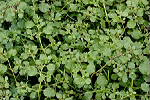
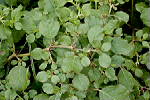
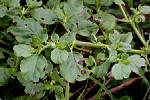
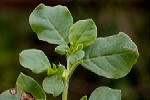
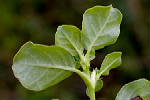
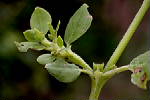
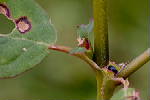

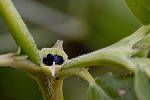
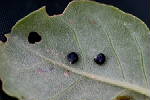
Botany Biology Phenology Ecology Distribution Cultural control Biological control Chemical control
| Description : | Terrestrial, annual, prostrate herb, up to 40 cm long. Taproot white or brown. Stem procumbent, rounded, solid, hairy, succulent. Stipules present, glabrous. Leaves simple, entire, opposite and and very unequal in size (a great petiolate in front of a small sessile one), stalked, glabrous on both sides, margin entire, apex rounded or emarginated, base acute, obtuse or rounded, pinnately veined. Flowers bisexual, solitary or grouped in a few-flowered, axillary, sessile glomerule, sessile, white, pink, or purple, petals 5. Fruit a capsule opening circumsessile with a lid. |
| Seeds : | Kidney-shaped, in spiral ended by a beak, 2 mm in diameter. The tegument is tuberculate, reddish, brown to black. |
| Seedling : | Cotyledons elliptic lanceolated, petiole, of uneven size, a from 12 to 16 mm in length and 3 to 4 mm wide, the other one from 10 to 12 mm in length and 2 to 3 mm wide. Hairless and fleshy. |